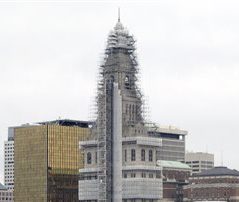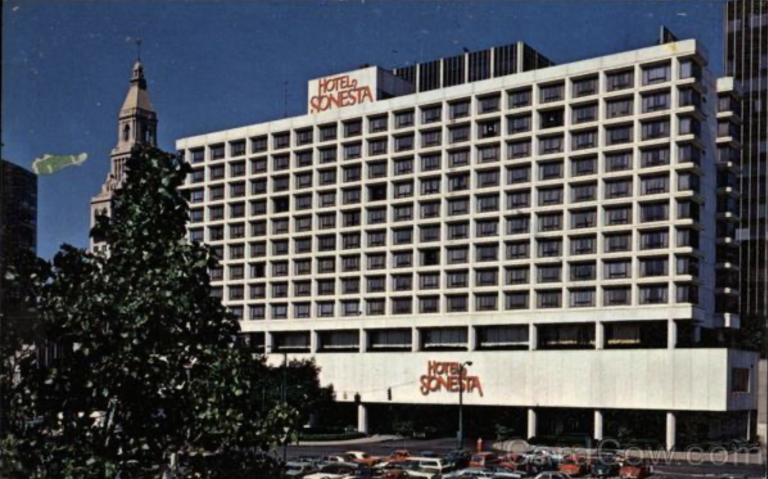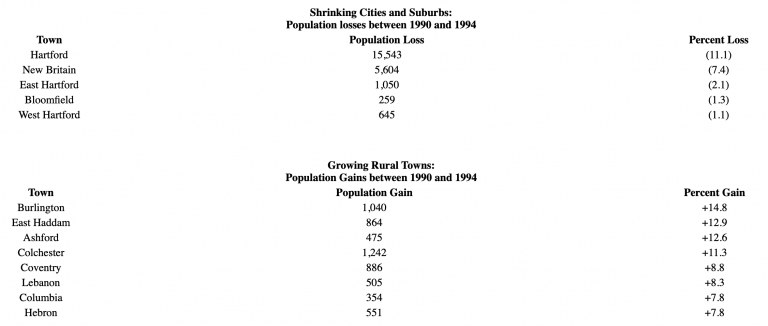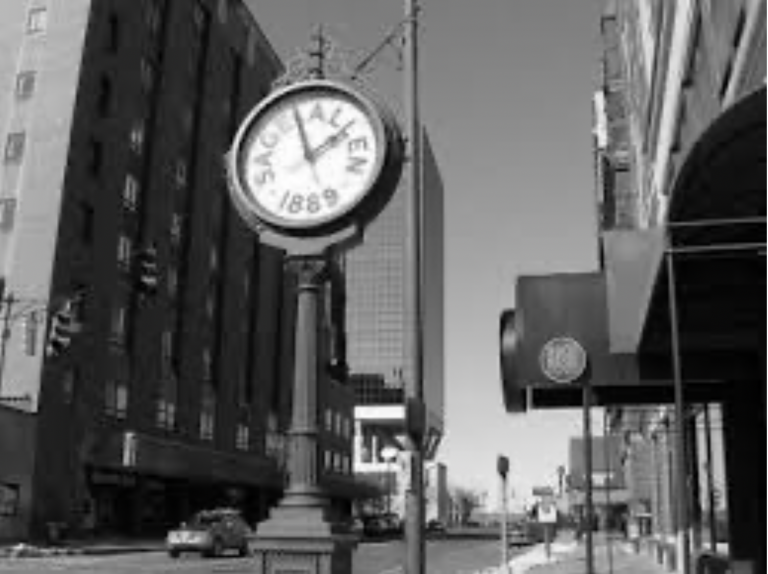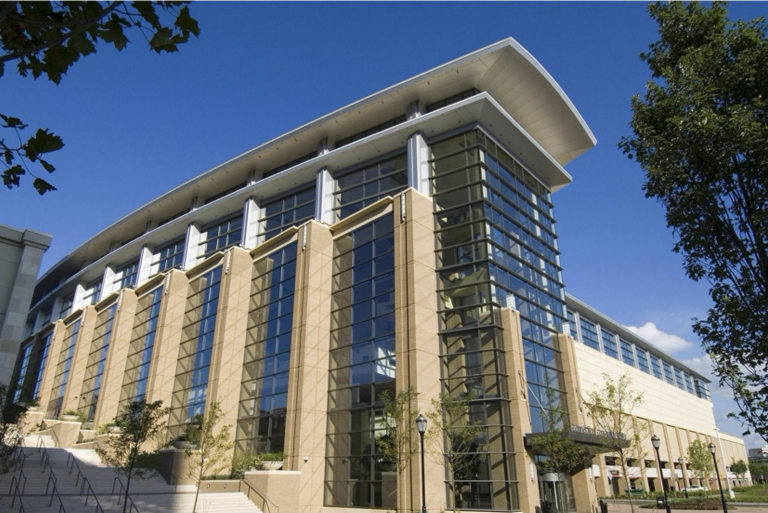Recently, I asked an older family member what they thought of Hartford’s economy. Their response was rather intriguing: “Everything seemed wonderful, until the ‘90s happened”. I, of course, was not alive in the 1990s, and would have no understanding of how prosperous (or not) the city’s economy would have been during this time. However, this individual’s assertion that the 1990s marked economic downfall for the Constitution State’s capital grabbed my interest. Now, I have sought out to explore that thesis, and truly understand why so many Connecticut (and Hartford) residents feel that way.
Hartford Sees Great Economic Loss
The 1980s were a façade of economic hope and prosperity across the nation, especially in Connecticut. Real estate was booming, office space in Hartford tripled, and job growth was unprecedented. However, the late 1980s saw the first signs of economic trouble for the state as a whole as the nation’s economy slowed from a full-out sprint to a leisurely walk. Hartford began to truly see the effects of the recession of the 1990s in areas of insurance, defense, and business capital. According to University of Connecticut economist Fred Carstensen, Connecticut and the capital were “’old-line manufacturing, old-line financial services and old-line defense, and all three of them went south at the same time’" (Carstensen qtd. Gershon, 2008). Defense contracts in Hartford made up 5.7% of personal income between the years of 1989 and 1991, accordioning to the Comptroller of Connecticut. However, between 1992 and 1995, that dropped to a mere 1.3%. As defense spending came to a halt, the ripple effects were undeniable. The transportation industry, as well as the manufacturing industry, saw losses as well. By October of 1996, Hartford saw an unemployment rate of 9.2%. There was a similar spike in poverty. In 1970, Hartford’s poverty rate was 17%. By 1990, that number nearly doubled, with a rate of 27.5%.
Small restaurants began to close their doors and hotels, such as the 36-year-old Summit or the 410-room Hilton, began to either close down, leading to “more than 40 percent” of the city’s hotel rooms to disappear nearly overnight (Johnson 1990). Insurance companies, such as Travelers, reduced employment opportunities. Perhaps the biggest loss was in the convention section, as Hartford began to struggle in the trade they preciously dominated. As expensive convention accounts migrated to competitors in Springfield, Massachusetts, or Mystic, Connecticut, Hartford began to lose its stake as a convention icon. Concerts and major events, such as the 1981 visit by the Rolling Stones to the Hartford Civic Center, also kept the economy afloat. However, as the popularity of outdoor shows increased, and the demand for only 16,000 seats in a stadium decreased, even the Civic Center saw declines in demand.
Although the recession ended in late 1992, the economic impact it had on Hartford lasted for years to come. Its impact was especially felt in residency.
Residents Leave the City, as Well as Visitors
As the economy seemed to decline further and further in Hartford, fewer and fewer residents were able to find reasons to remain in the city. Between the years of 1990 and 1994, Hartford saw a population loss of 15,543. This staggering 11.1% loss was, as reported by the Comptroller, “the largest in the nation for a large city during the four-year period”. This extreme population shift was record-breaking and its population of 124,196 in 1994 was the lowest it had been since prior to the first World War. Residents began to pack up and move out of the city to live a more suburban lifestyle, and individuals with “moderate- income” left the city behind, with the only remaining residents being populations without the means to leave, meaning Hartford became “poorer [in 1995] than it was five years ago” (Winkle qtd Swift 1995). Americans began to desire green backyards, bigger homes, and smaller populations. Cities, such as Hartford, suffered the consequences. Naturally, the business left with the residents. With a smaller local population, Hartford’s economy had a difficult time getting back on its feet. Fewer apartments and homes were being sought after, restaurants saw less patronage, and small businesses saw less foot traffic.
As many local residents left, it became more and more difficult to attract visitors to the Insurance Capital of the World. The largest population of residents to leave the city where middle- and upper-class white residents, who now found themselves able to afford housing in other communities. Lower- or working-class residents were unable to leave, and the population of residents inhabiting Section 8 housing rose dramatically. The cities nightlife went from alive to dead nearly overnight. Yet, with the city’s population dwindling, tourism seemed to be Hartford’s last hope at keeping restaurants, clubs, and retail locations open. As the president of the Convention and Visitors Bureau stated, “’ It’s a very fragile balance”’ (Trafton qtd Johnson 1990).
Iconic Businesses Leave the Capital in Droves
In 1835, Packard & Brown’s bookstore opened its doors on State Street. Over the course of the next 158 years, the store became a staple of Hartford, even as it changed its name 6 more times and moved around the capital city. Literary icons, such as Mark Twain, would often walk through the front doors to browse the aisles. In 1979, the Epstein family purchased what was then known as Huntington’s, which was known as the “oldest continuously operating bookstore in the United States” (McClurg 1993). However, 14 years later, owner David Epstein made the difficult decision to permanently close the doors of Huntington’s.
Epstein described a once lively and exciting place, where he spent his childhood with his father. However, as the years progressed, the Epstein family began to feel trapped in the rows of books, as business slowly declined. As the Hartford Courant reported in 1993, business dropped off 25 to 32 percent in just the first three months of the year. The economic strain was due to a variety of variables: Big box stores, such as Barnes & Noble, were rising in popularity. The downtown area saw fewer and fewer workers, due to recent layoffs. A recession was at full swing. Despite Epstein’s best efforts, Huntington’s became more of a chore than a love, and he had to shut its doors. Many patrons were shocked by the news, such as Mina Santomenno, who stated that Huntington’s was “’more than a bookstore”’ to her (Santomenno qtd McClurg 1993).
Huntington’s was not the only Hartford-based business that closed permanently in the 1990s. Sage Allen & Co., founded in 1889 as a department store, closed its flagship location in Hartford in 1990. Although the store became a chain, its original location shut its doors right where the journey began, with its final location closing in 1993. Memories of Sage Allen & Co. were sweet, between the smell of spicy sticky buns to its landmark sidewalk clock.
Can Hartford Bounce Back?
The history of the 1990s paint a bleak picture for the future of Hartford. However, in recent years, the city has begun to ramp up efforts to revitalize once abandoned spaces, and pump life back into empty streets.
In late 2019, it was announced that the old Sage Allen & Co. building was up for a remodel. Laz Investments along with their partners, Lexington Partners and Shelbourne Global Solutions, decided to team up in an attempt to reconfigure the historic building, making it into fun, modern apartments. The units will mostly consist of one-bedroom apartments and studios, which is in much higher demand than the typical 3-bedroom set up. Developers, such as Stephen Fitzsimmons, hope that bringing new residents back into Hartford could give the economy a push back towards prosperity. Fitzsimmons is hoping that new, swanky apartments could be “’invigorating’” for Hartford, especially for small businesses and restaurants, who have been struggling to remain open in recent years (Fitzsimmons qtd Raff 2019).
Apartments to be constructed inside old Sage-Allen building
In 2002, the $770 million Adriaen’s Landing Project began. The project was slated to create a hotel, apartments, restaurants, shops, entertainment stops, a muse an, and a large convention center. A now iconic part of the development project is the Connecticut Science Center, whose total revenue was over $10 million in 2017. This project, by 2030, is projected to have increased the personal income of Hartford residents by $77.80 million, the Gross State Product in Hartford county to $145.88 million, and the Hartford county population by 1,306.
Hartford continues to search for economic opportunities and potential projects, one of which being the Bartholomew Avenue project, which is a “$3.9 million infrastructure initiative that will” address flooding concerns and aesthetic desires, such as the inclusion of “new walks, parklets, bike amenities, curbs, lighting and landscaping” (Hartford.gov).
Concluding Thoughts
Hartford’s economic history, especially in terms of the 1990s, has been incredibly tumultuous. At times, it was difficult for residents to imagine a more prosperous life in the capital city. However, with new developmental projects and positivity, Hartford is on the incline once again.
Unfortunately, due to the state and country’s “new normal” in an era of COVID-19, Hartford’s economy is on track to experience yet another recession, similar to those in the 1990s, and in 2008. The real-estate business, especially, will feel the impacts of this global pandemic. According to Donald Poland, managing director of urban planning at a local advisory firm, stated it will become difficult to “make investment decisions … right now and the longer that continues the more detrimental it will be” (Cooper 2020). Of course, small business and the commercial market in general will be hit hard, as well long-term leasing agreements. Local retail shops don “closed” signs across the city, promising a re-open once the “viral emergency is over” (Cooper 2020). It is hard to predict when this will be, if ever, and many businesses are bearing the brunt of this nation-wide confusion. Perhaps a spot of hope for the city during such an unpredictable time is its larger tenants, such as healthcare and insurance firms. It is difficult to find these small glimmers during the COVID-19 age, but there is an aspect of optimism to be noted. Hartford is not alone in this fight. Small businesses, restaurants, hotels, leasing-offices and cities nationwide will all be in the same fight. At least this time around, Connecticut’s capital city will have some allies to lean on across the United States.
Bibliography
“A $1 Billion Development Is Proposed for Hartford.” The New York Times, The New York Times, 14 May 1998, www.nytimes.com/1998/05/14/nyregion/a-1-billion-development-is-proposed-for-hartford.html?searchResultPosition=3.
Campbell, W. Joseph. “State’s Economy Is Entering An Era Of Limits.” Courant.com, 12 Sept. 2018, www.courant.com/news/connecticut/hc-xpm-1992-10-12-0000111385-story.html.
“Clarion Hotel Hartford (Closed) - Wikimapia.” Clarion Hotel Hartford (Closed) - Hartford, Connecticut, wikimapia.org/19331081/Clarion-Hotel-Hartford-closed.
“Connecticut Convention Center.” Event Management Software & Hospitality Solutions, www.cvent.com/venues/hartford/convention-center/connecticut-convention-center/venue-1e0a3755-0675-46a4-8906-bfdf862df28a.
Cooper, Joe and Greg Bordonaro. “The Great Recession Wreaked Economic Havoc on Downtown Hartford. Will COVID-19 Do the Same?” Hartford Business Journal, www.hartfordbusiness.com/article/the-great-recession-wreaked-economic-havoc-on-downtown-hartford-will-covid-19-do-the-same.
Fry, Kip. “$770M Adriaen's Landing Project Begins in Hartford, CT.” Construction Equipment Guide, Construction Equipment Guide, 16 Jan. 2002, www.constructionequipmentguide.com/770m-adriaens-landing-project-begins-in-hartford-ct/1775.
Hartford.Gov - Bartholomew Avenue Streetscape, www.hartford.gov/dds-projects/232-development-services/2305-prj-bartavestreetscape.
Hartford.Gov - Economic Development, www.hartford.gov/dds-ed.
Johnson, Kirk. “Hartford, Its Boom Over, Sees Downtown Decaying.” The New York Times, The New York Times, 22 Aug. 1990, www.nytimes.com/1990/08/22/nyregion/hartford-its-boom-over-sees-downtown-decaying.html.
McCLURG, JOCELYN. “Book Buyers Say Goodbye To Piece Of Hartford History.” Courant.com, 12 Sept. 2018, www.courant.com/news/connecticut/hc-xpm-1993-05-28-0000101474-story.html.
Mutter, John. “Huntington's to Close; Owner Blames Competition, Economy.” Publishers Weekly 240.14 (1993): 13.
“Not Your Uncle’s Recession in Connecticut” - HartfordInfo.org, www.hartfordinfo.org/issues/documents/economicdevelopment/htfd_courant_022308.asp.
Prakash, Nandika, et al. Connecticut Department of Economic and Community Development: The Economic and Fiscal Impacts of Adriaen’s Landing. July 2008, www.remi.com/wp-content/uploads/2018/01/186-CT-Dept-of-Econ-Development-The-Economic-and-Fiscal-Impacts-of-Adriaens-Landing.pdf.
Raff, Susan. “Apartments to be Constructed inside Old Sage-Allen Building.” WFSB, 25 Nov. 2019, www.wfsb.com/news/apartments-to-be-constructed-inside-old-sage-allen-building/article_0ced15f2-0fd0-11ea-bab0-f3525a59d618.html.
“Six Historic Downtown Department Stores.” New England Historical Society, 21 Dec. 2019, www.newenglandhistoricalsociety.com/six-historic-downtown-department-stores/.
State of Connecticut, Office of the State Comptroller .The Comptroller's Report - January 1997 - Economic Condition and Outlook, www.osc.ct.gov/reports/economic/97cmprpt/crptecon.htm.
Swift, Mike, and Rick Green. “People Leaving Hartford In Record Numbers.” Courant.com, 13 Sept. 2018, www.courant.com/news/connecticut/hc-xpm-1995-10-02-9510020072-story.html.
State of Connecticut, Office of the State Comptroller . The Comptroller's Report: Connecticut's Economic Health - 1/30/96 - The Changing Face of Connecticut, www.osc.ct.gov/reports/economic/96cmprpt/crptchgf.htm.
“The Sage Allen Clock in Hartford, USA.” GPSmyCity, www.gpsmycity.com/attractions/the-sage-allen-clock-47991.html.
Tigas, Mike, et al. “Connecticut Science Center Inc - Nonprofit Explorer.” ProPublica, 9 May 2013, projects.propublica.org/nonprofits/organizations/61538101.
